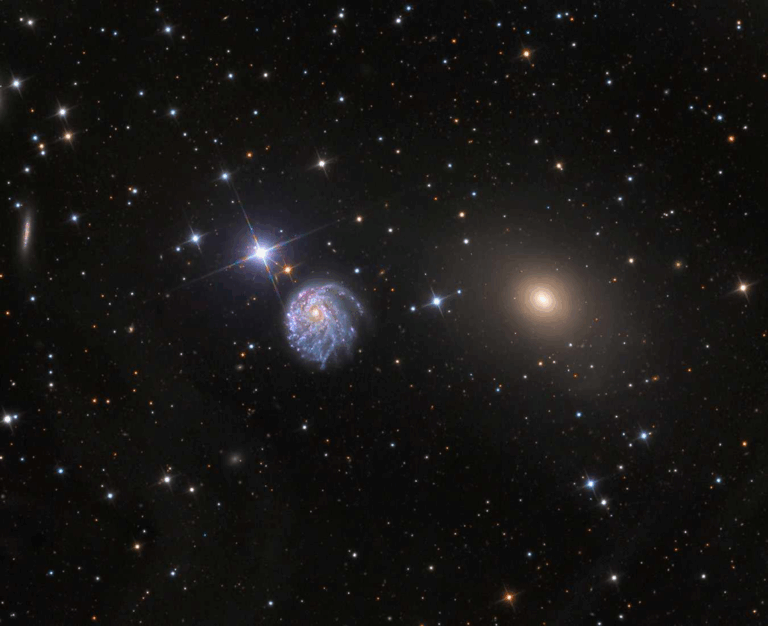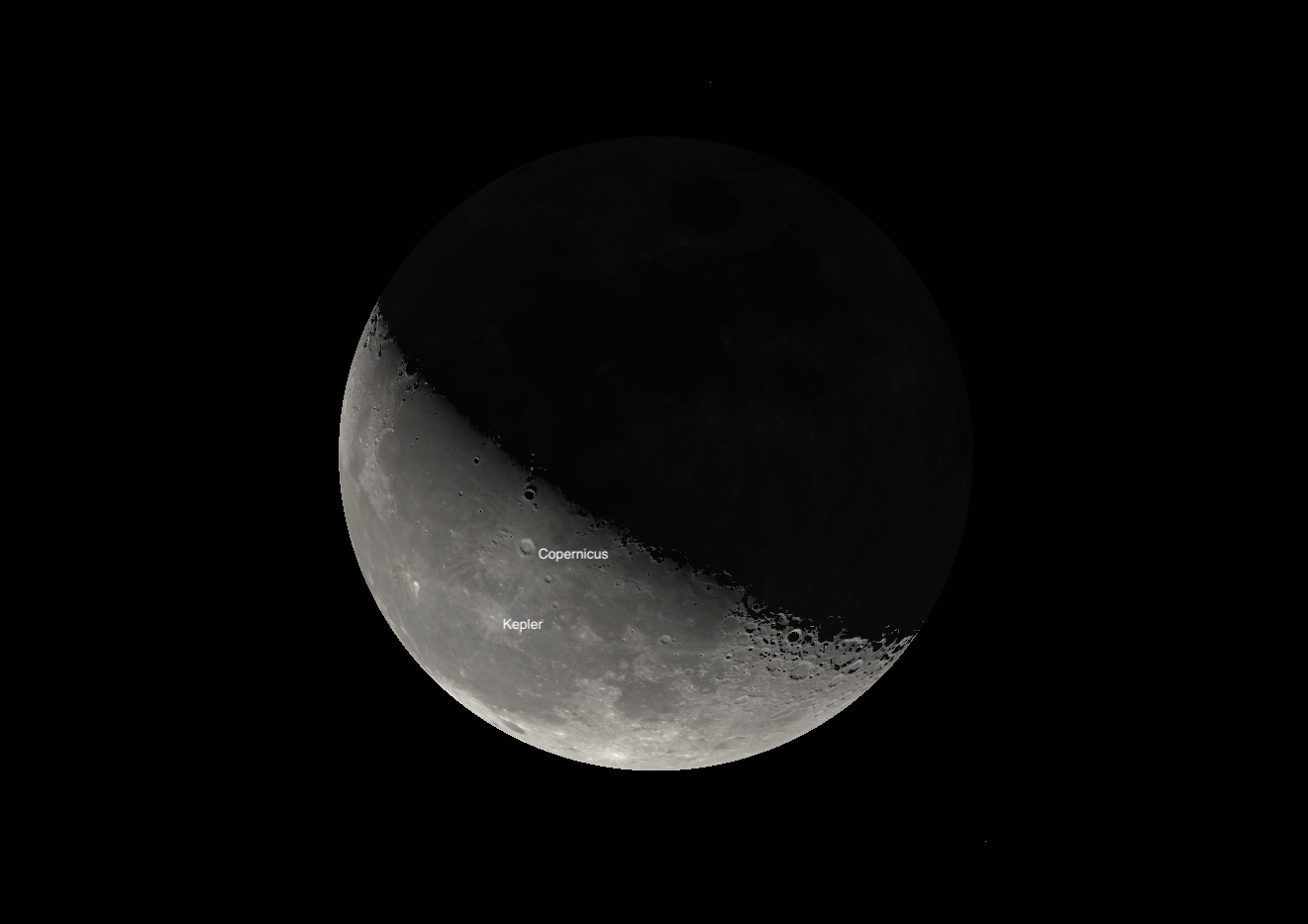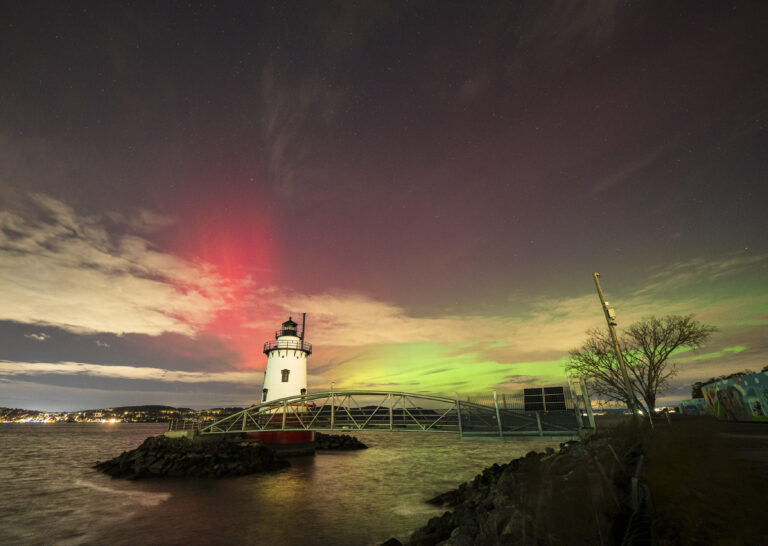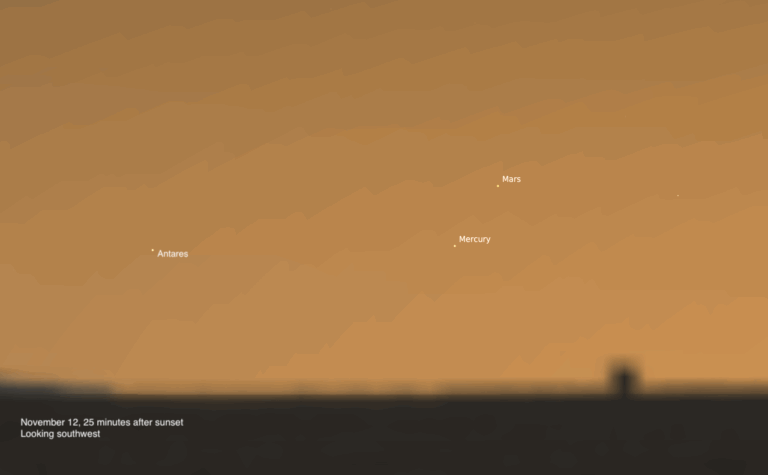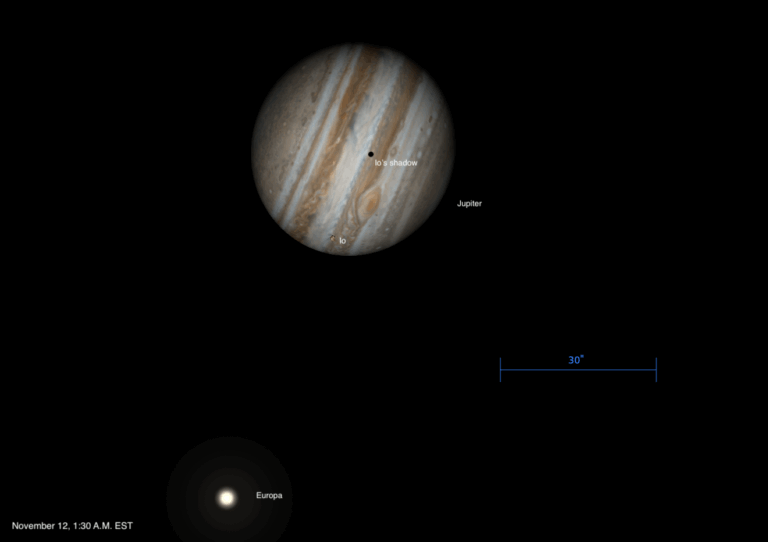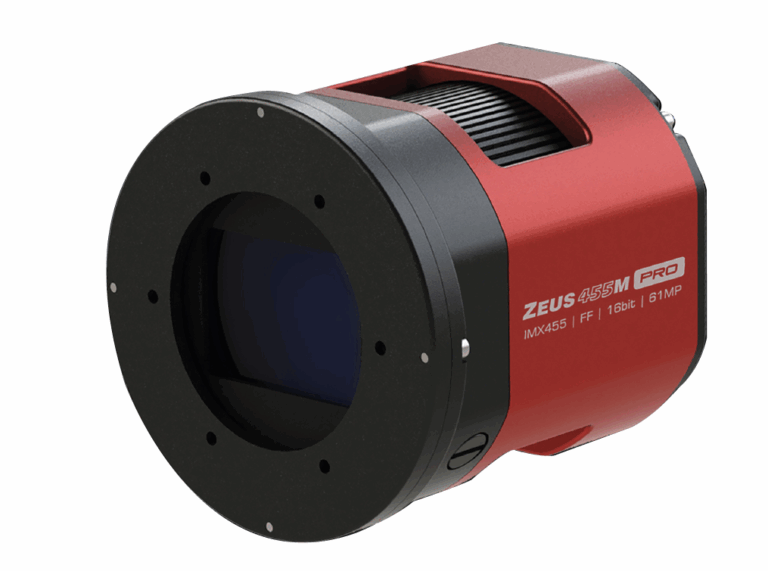Key Takeaways:
The king of planets glows at magnitude −2.8 in early December, brighter than any other point of light in the sky. The planet lies in Taurus the Bull, and is about 30 times more brilliant than the brightest star in that constellation, Aldebaran (Alpha [α] Tauri). Look for Jupiter in the east at sunset.
“Jupiter will climb high in the southeastern sky as the night wears on,” says Senior Editor Richard Talcott. “In fact, this year’s opposition is one of the best for Northern Hemisphere observers, as the planet will reach about 70° at local midnight.” The high altitude means its light will travel through less of Earth’s turbulent atmosphere, providing a better view through a telescope.
Jupiter is a great target for beginners. You’ll be able to spot its dark equatorial cloud belts and lighter zones, and even its four major moons, which orbit around Jupiter’s equator. The planet’s disk spans 48″ across its equator at opposition.
Throughout December, Jupiter passes just a few degrees north of the V-shaped Hyades star cluster. Use binoculars for the best view of this alignment.
Fast facts about Jupiter
- Jupiter is the largest planet in the solar system. More than 1,000 Earths could fit inside Jupiter, and all of the other planets together make up only about 70 percent of Jupiter’s volume.
- It takes Jupiter about 12 years to orbit the Sun once, but only about 10 hours to rotate completely, making it the fastest-spinning of all the solar system’s planets.
- Jupiter rotates so rapidly that its equatorial diameter, 88,846 miles (142,984 kilometers), is 7 percent larger than its polar diameter of 83,082 miles (133,708km).
- Jupiter reflects 52 percent of the sunlight falling on it, more than any other planet except Venus (65 percent).
- Jupiter’s four bright moons, Io, Europa, Ganymede, and Callisto, are easily visible through small telescopes. Io takes less than two days to orbit, so its relative position visibly changes in an hour or so — less when it appears close to Jupiter.
- Our line of sight lies in the plane of the jovian moons’ orbits, so we see occultations (when a moon moves behind Jupiter), eclipses (when Jupiter’s shadow falls on a moon), and transits (when a moon passes in front of Jupiter) at various times.
- Jupiter’s moon Ganymede is the solar system’s largest satellite, with a diameter of nearly 3,300 miles (5,300km), making it even bigger than Mercury.
- Video: Tour the solar system: Jupiter, with Richard Talcott, senior editor
- Video: Easy-to-find objects in the 2012/2013 winter sky, with Michael E. Bakich, senior editor
- StarDome: Locate Saturn in your night sky with our interactive star chart.
- The Sky this Week: Get your Jupiter info from a daily digest of celestial events coming soon to a sky near you.
- Sign up for our free weekly e-mail newsletter.


